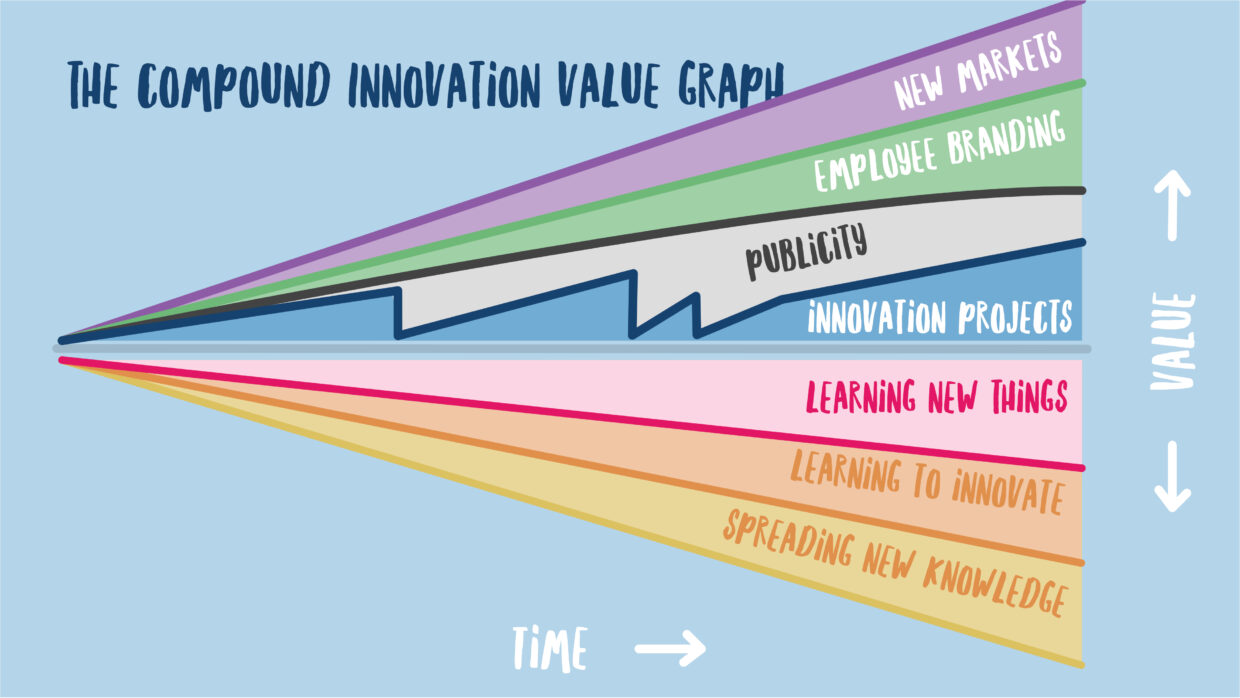Most people look at innovation as a means to reach the next s-curve, or the next stable product- and service lines. These innovative products might result in new business models, new products and new organizational structures to bridge the delta between the old to the new situation. This is however a rather quant and limited view to the effect of Innovation as a practice and journey.
Innovation however is also an activity spread over time, with short, iterative stints of trail, test, reflection and learning. This in itself has a holistic and compounding effect on the practitioners, their surroundings and eventually the context in which they innovate. Ideally the entire organisation is witness and participant of the process and will see value grow in more than one aspect of both the current organization and artifacts introducing the new organisation.
Most importantly, the organisation needs to take into account that the following compounding effects will take place, so that they are facilitated, rather than failing as collateral effects that might lose value if not attended to.
Innovation value is more than the value of its project results
The typical (novice) expectation of an innovation timeline is this: a steady, uninterrupted growing amount of value being built up with each step taken.
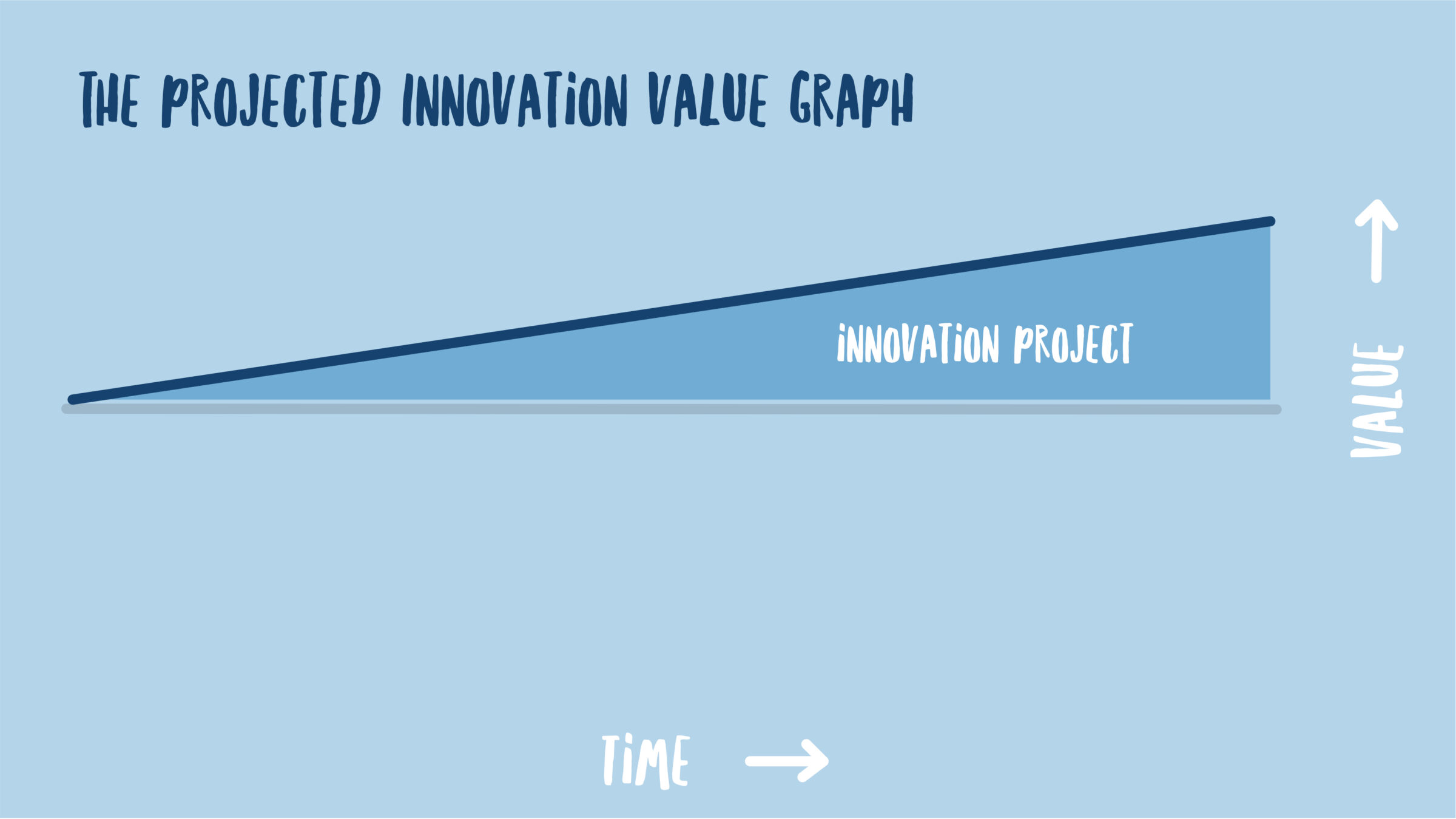
In most cases some publicity is also added. At first the publications are shared in the company, and later also with peers in the market.
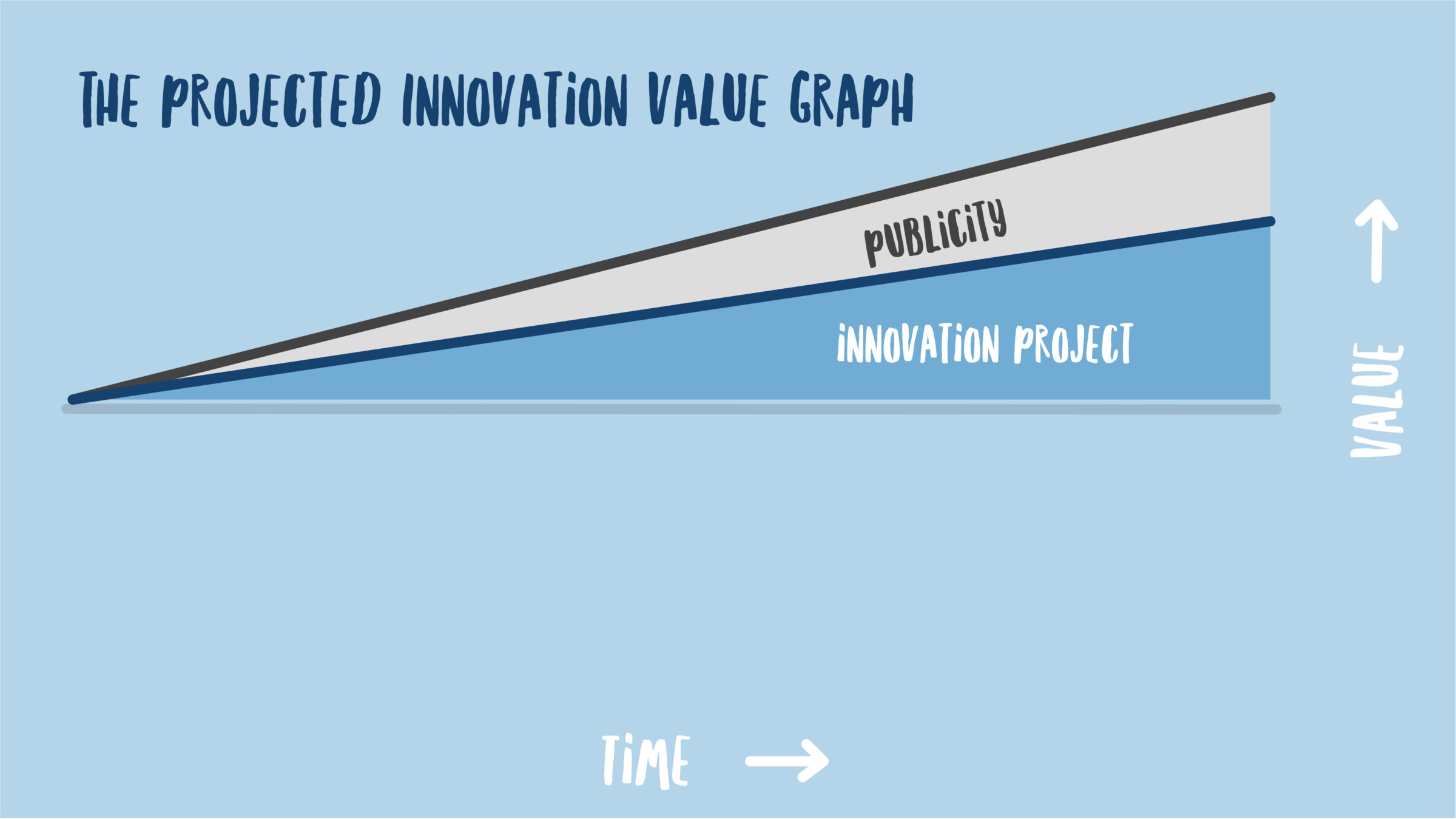
A more realistic and more desirable situation is where the practitioners discard the results, start over and reiterate on the previous experiences and insights.
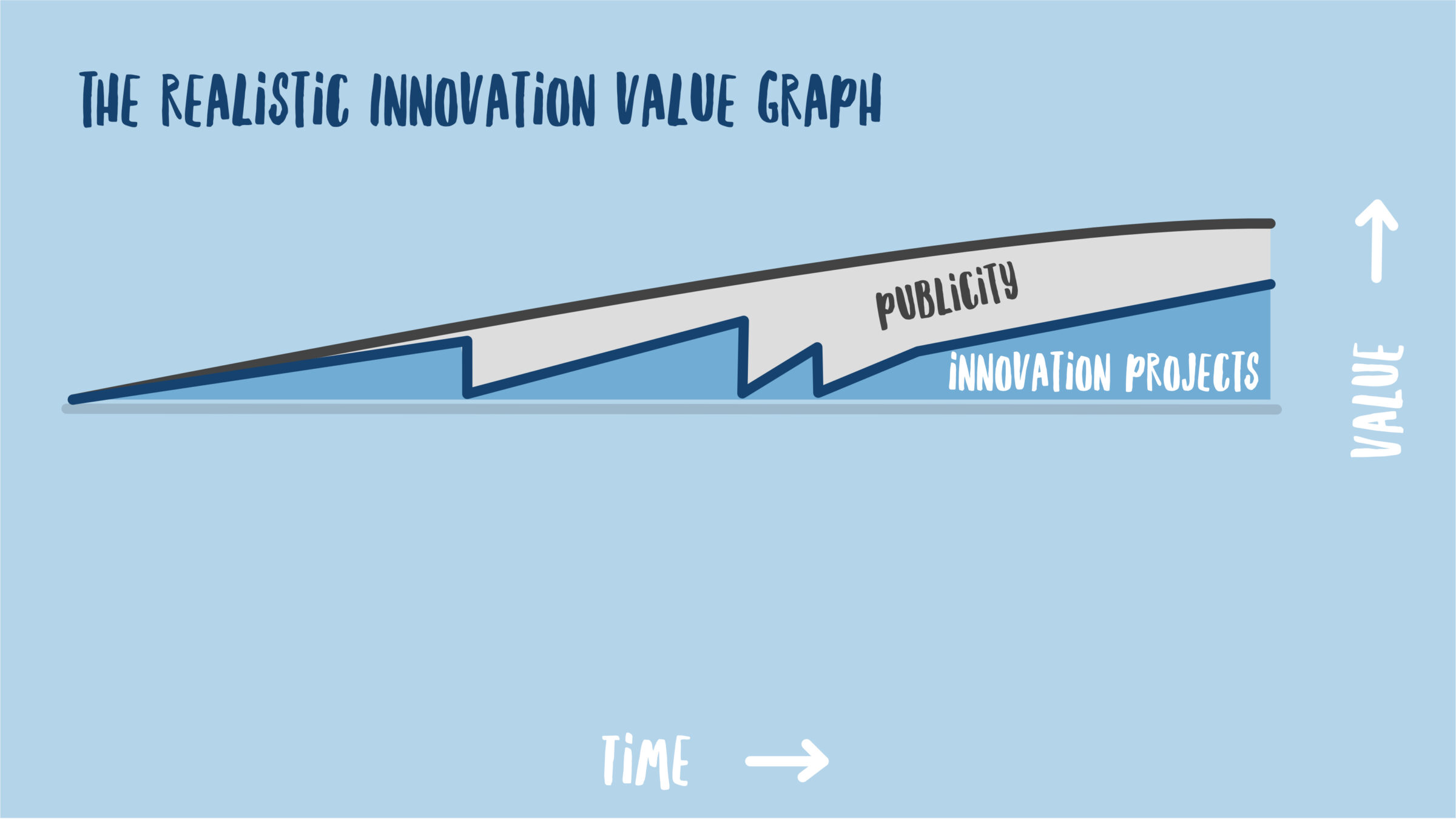
Some might even claim that the value of the first few stints will not increase with each iteration. The first few iterations are surely meant to ‘gel’, or find the footing of the process, team, goals and underlying strategies and stakeholder behaviours.
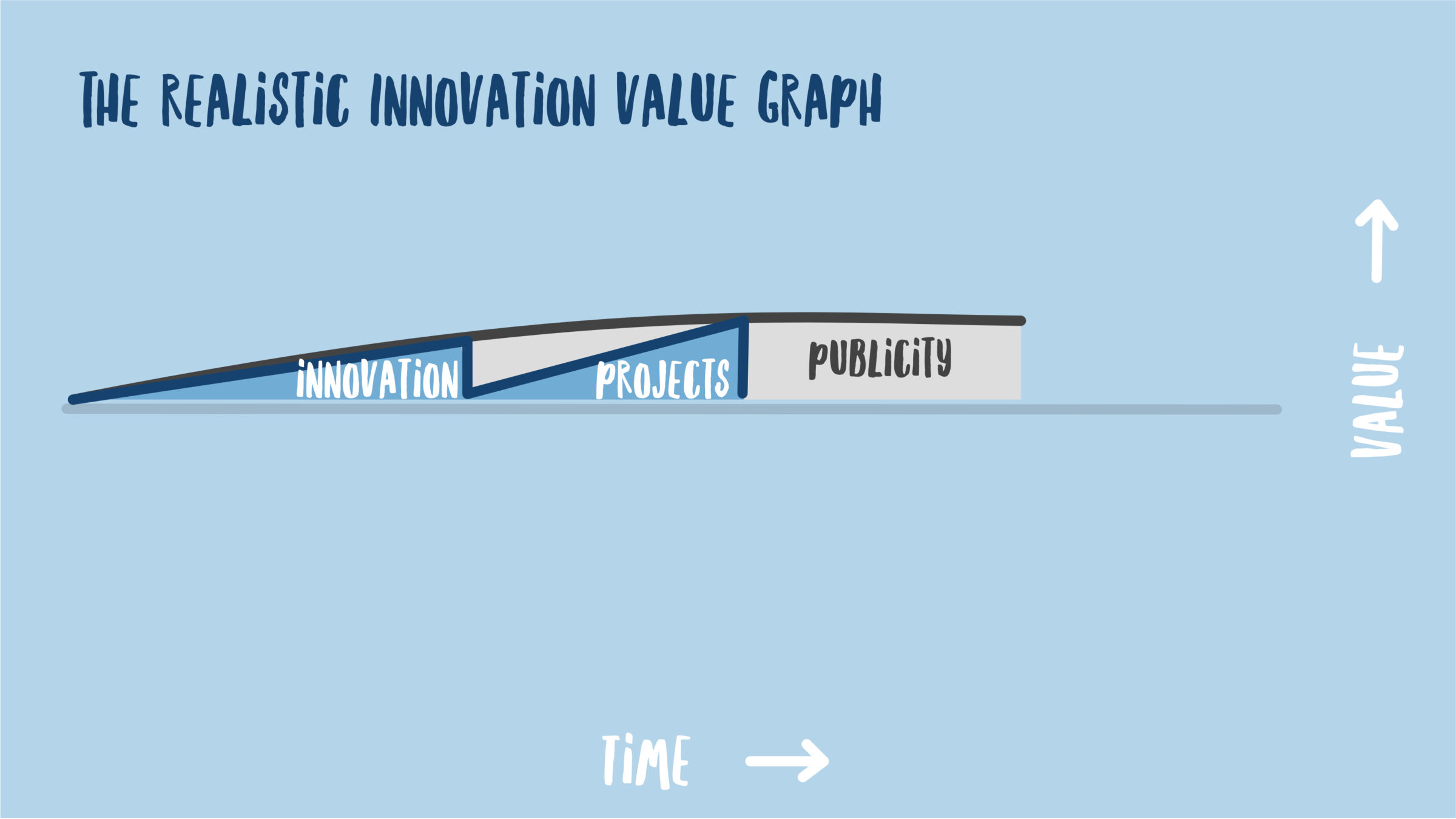
Learning to learn new things, i.e. crafting and material capacity
After more and more projects, not only the value of the outcome, but also publicity power will increase, but also the capacity of the innovation practitioners to learn, adapt and evolve will grow. This is mainly based on better grasp of material (technology, context) and honing the crafting capacity, which is knowledge of making for creation, rather than production.
This increased learning capacity is a group dynamic, both cultural, capabilities, experience and knowledge wrap into one ball of crafting and material capacity.
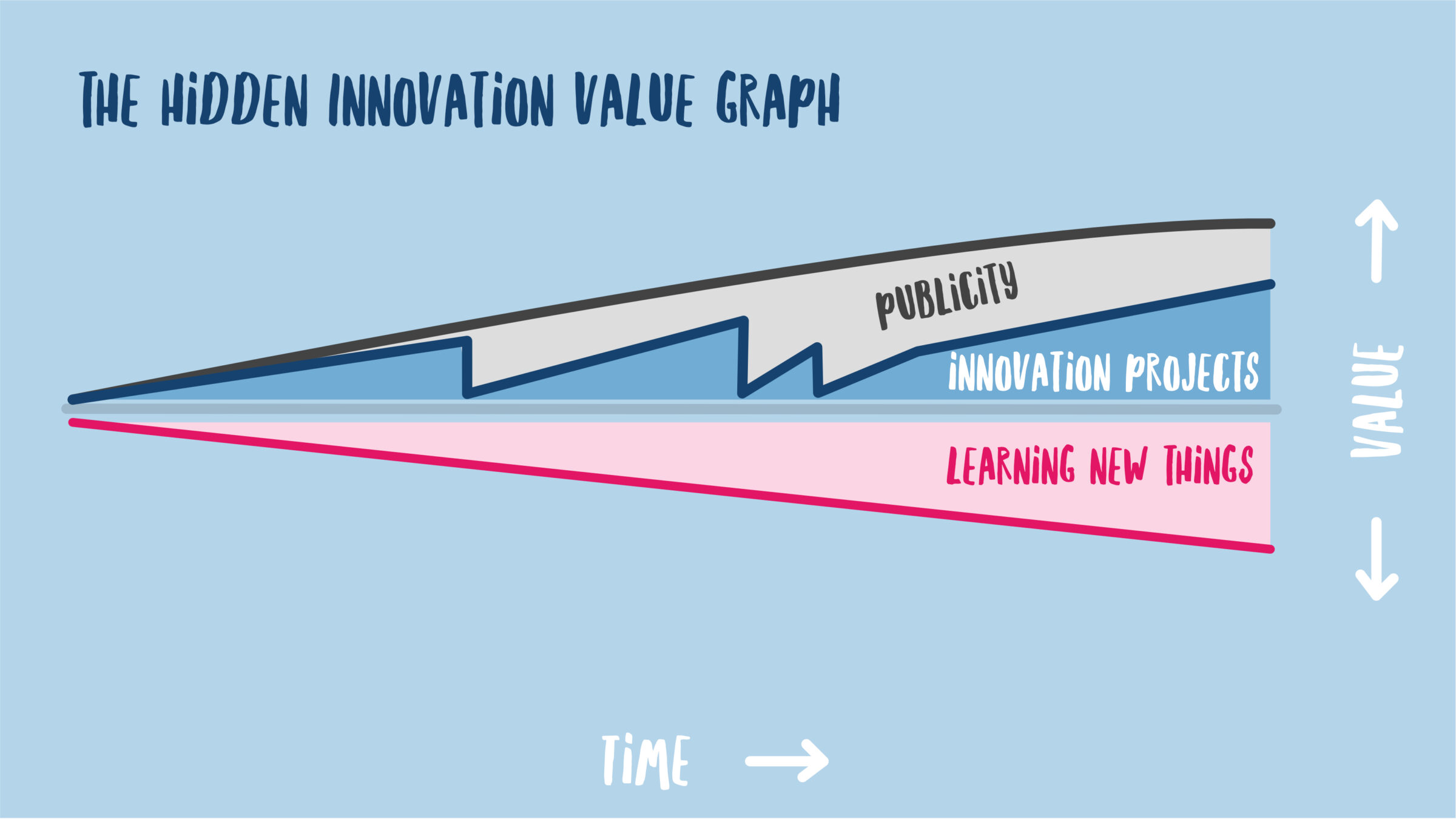
Not only material and crafting capacity will grow, but also the mindset, changed context and shaping the conditions to optimize the speed, width and breadth of innovation is growing with each iteration. The innovation practitioners are growing into generally better innovators.
This innovation capacity can be even accelerated while running the innovation processes, but they cannot be forced. This capacity is in most cases grown in a playful, pragmatic and opportunistic way, based on opportunity, necessity and urgency.
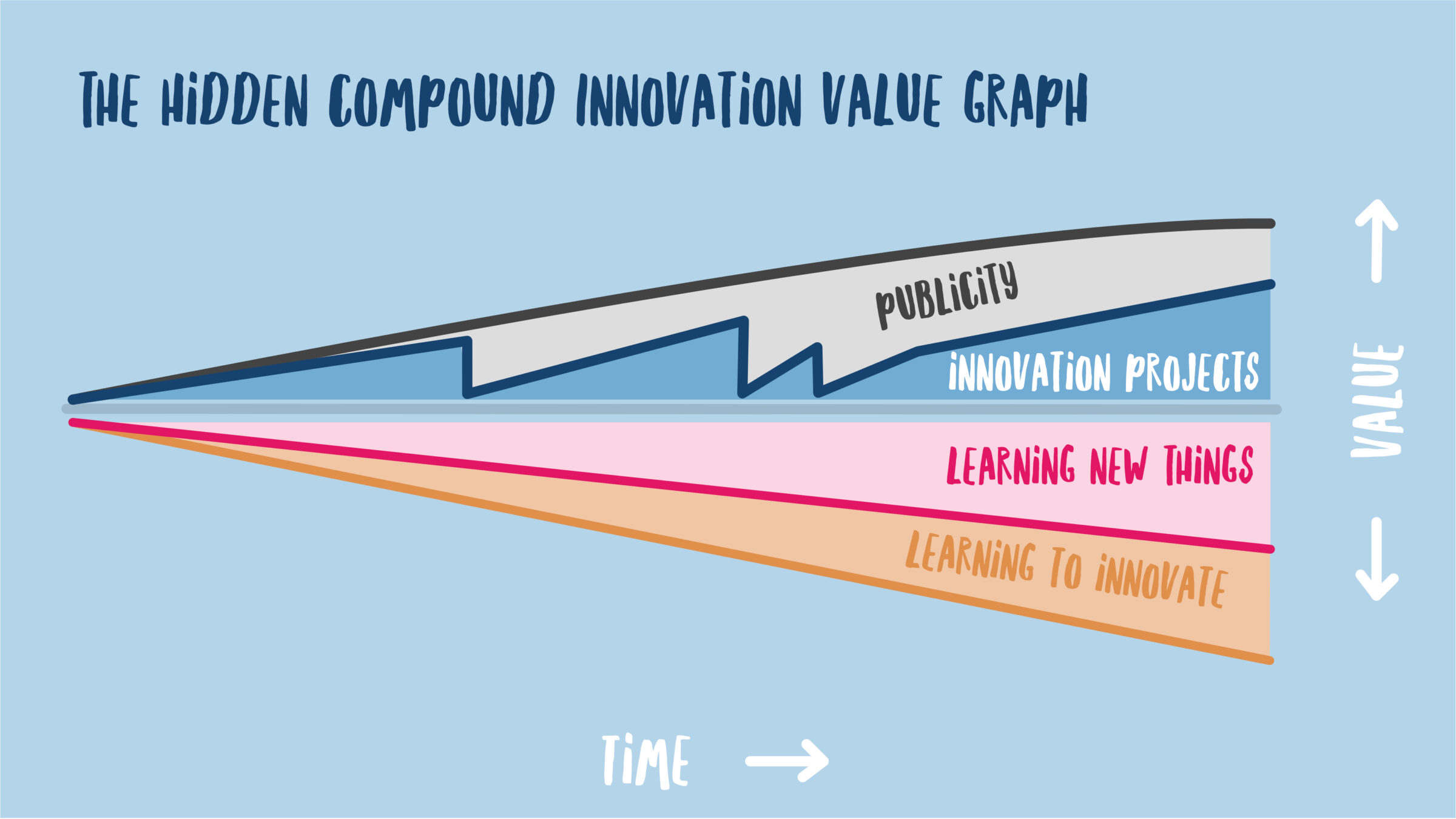
At a certain point the success increases exponentially where the quality of innovation is such that the team needs more, and diverse team members. The necessity of spreading the compounded value in knowledge, learnings, future products, implications on strategies, business models and organisational models will need to spread. This knowledge will either grow from within the innovation practitioners team, or by involvement of out/ intra company expertise and capacity.
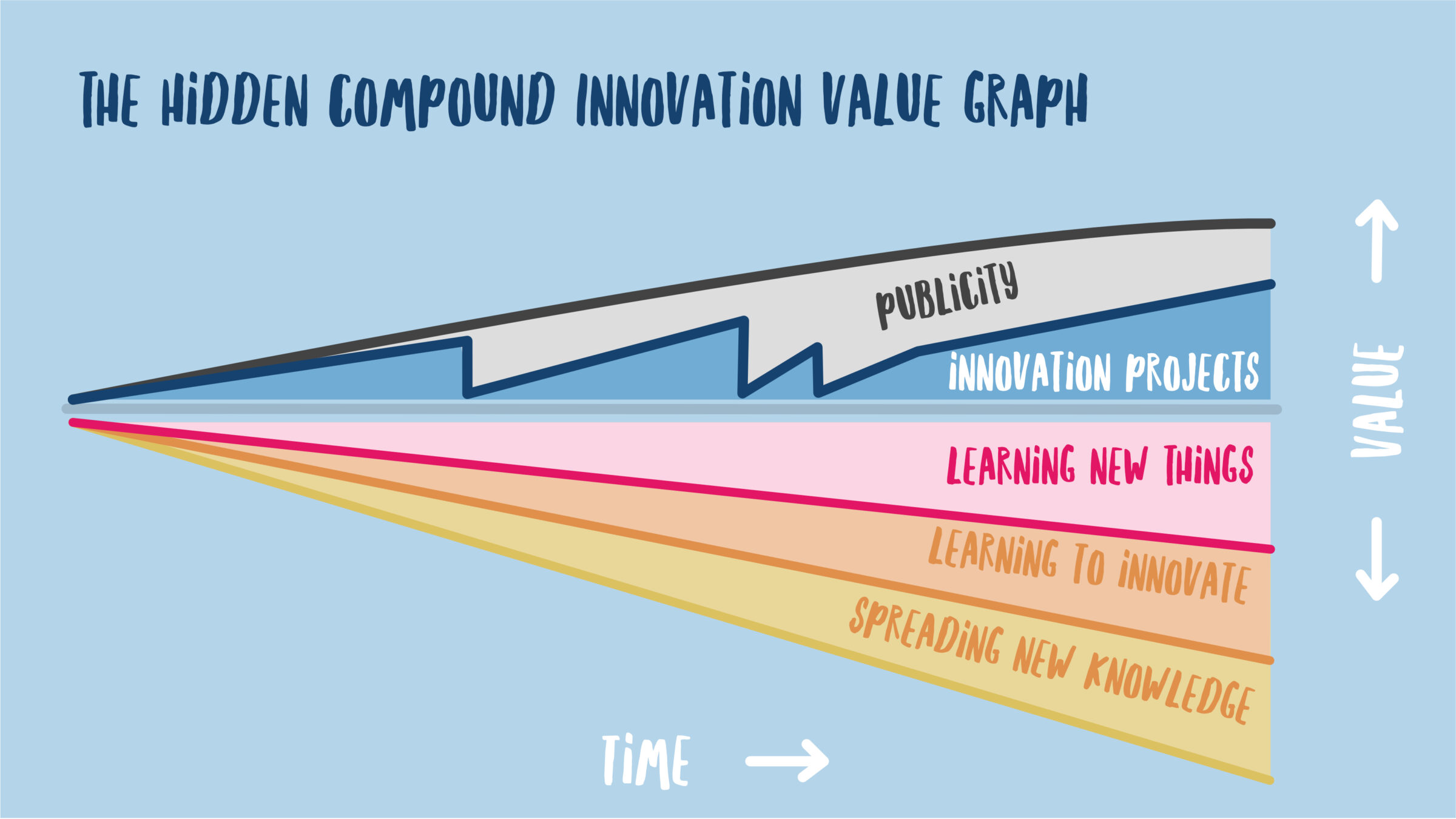
An innovative organisation needs a different type of employee
By informing, updating and involving more and more colleagues into the innovation process the image of the organization changes implicitly. Think in terms of publications: more and more people hear of the new interesting journey and results of said journey. They will adapt to this changed behaviour and impact it might have on their lives. This can be positive and negative, depending on both framing and content of the progress the innovation practitioners make.
The impact is first on relevant and opportunistic employees, but soon as the change of innovation reaches its strategy, it will also reach recruitment and outside employee branding. Think of this: oh, rather than ignoring, or waiting this company is attacking the opportunities, or threads of the industry head first. This could be perceived as energetic, proof of hubris, or new opportunities for a new generation of workers.
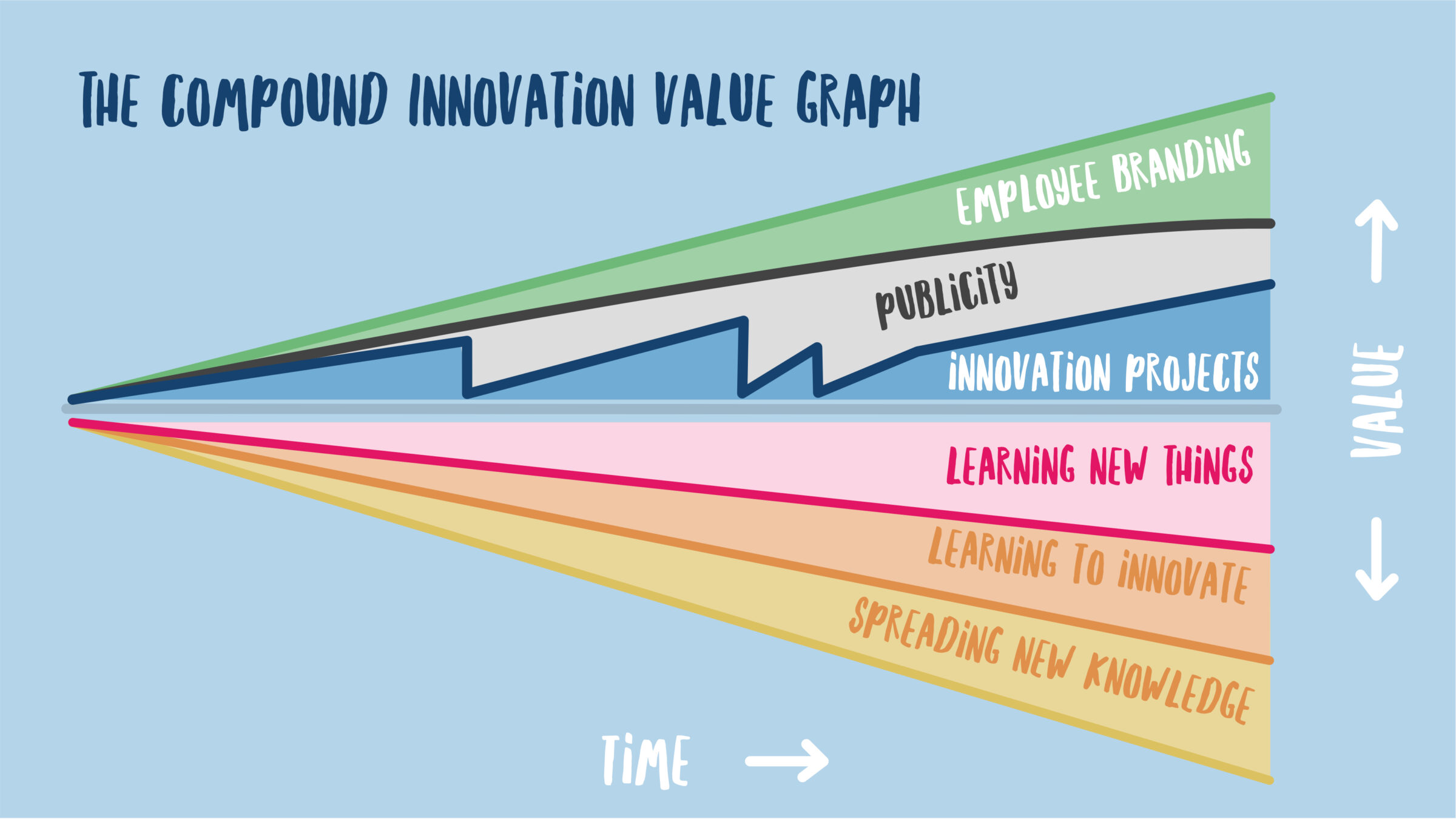
New market opportunities
Next to an impact on individuals that might see opportunity in the change within the organization, there is also a market change. Like people, the activity of innovation might also attract new customers, new partners and even new market competition.
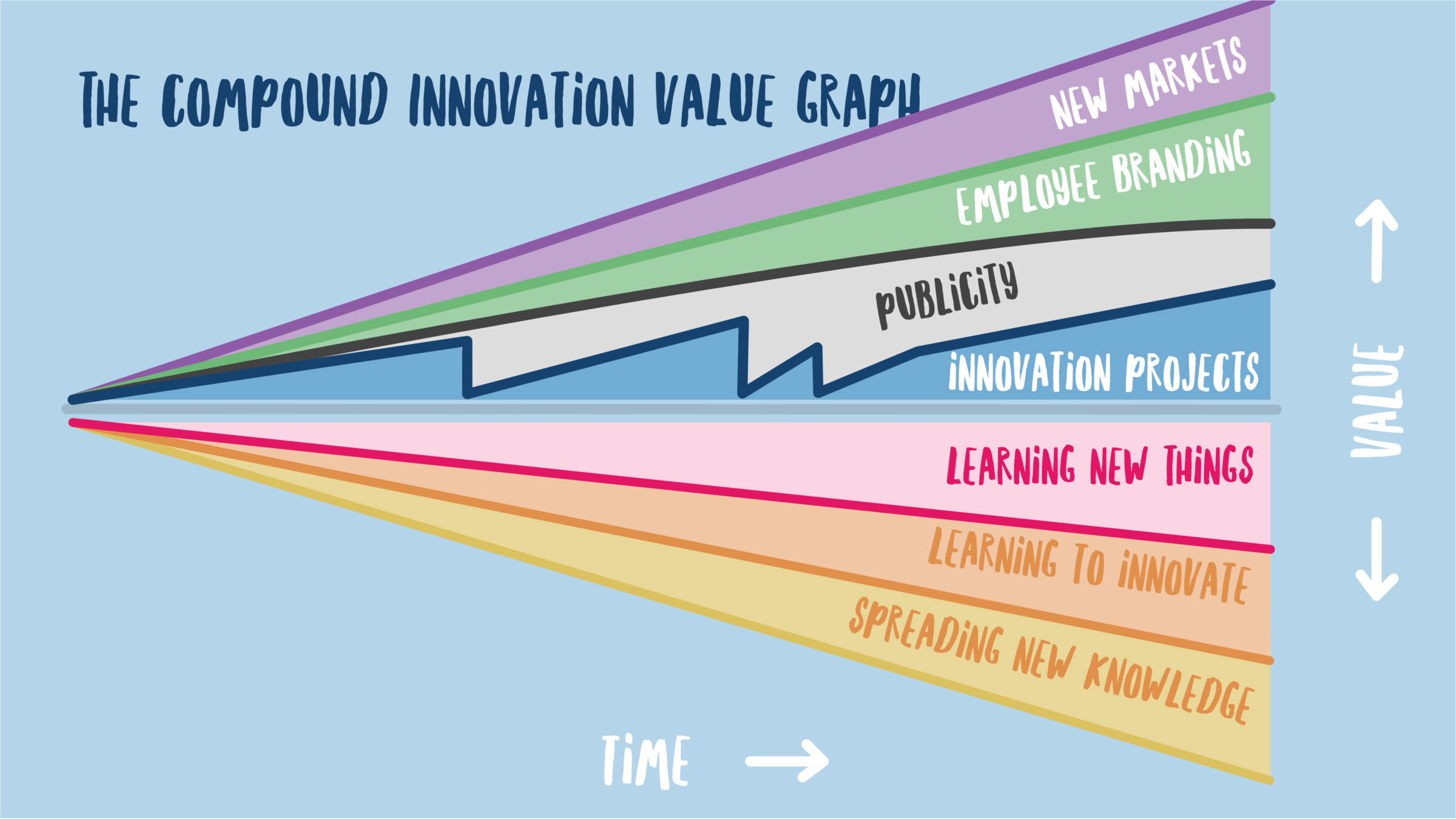
Scaling compound value of the practice of innovation
Like I started this article: the true value of innovation is seldom the outcome of the project, rather the knowledge, culture, energy, capacity and experiences generated by the practice of innovation. Some of this value however can be fleeting and could become very fragile to certain interventions.
Dissolving practitioners’ teams prematurely for example can be disastrous. If the practice has reached a certain amount of success, it’s very important to slowly put effort into scaling up in three directions:
- Split off production and refinement capacity under guidance of the creative practitioners.
- Infuse new talent into both the creation as well as the production side 1:2.
- Assign the strategic growth of both the innovation practice as well as a larger context in which the innovation can thrive as an activity and as a new business.
Scaling culture might be the biggest challenge, because it will change. Stakes will become different as well as the stakeholders and various expertise to maintain the innovation and transformation power. It has become no more an organic, but purposeful and deliberate project. No matter the change in culture, the energy and agility must be maintained, or more specifically: the capacity to practice innovation can not be encroached upon.
That means: starting the transformation to find the best match with the previous s-curve to the new one, live the journey from one to the other, build independent foundations and sever any source of inertia. At the same time: the infused change of culture in the organisation as a whole could be instilled to also transform the legacy S-Curve to better suit the new context.
That should be our next chapter.
